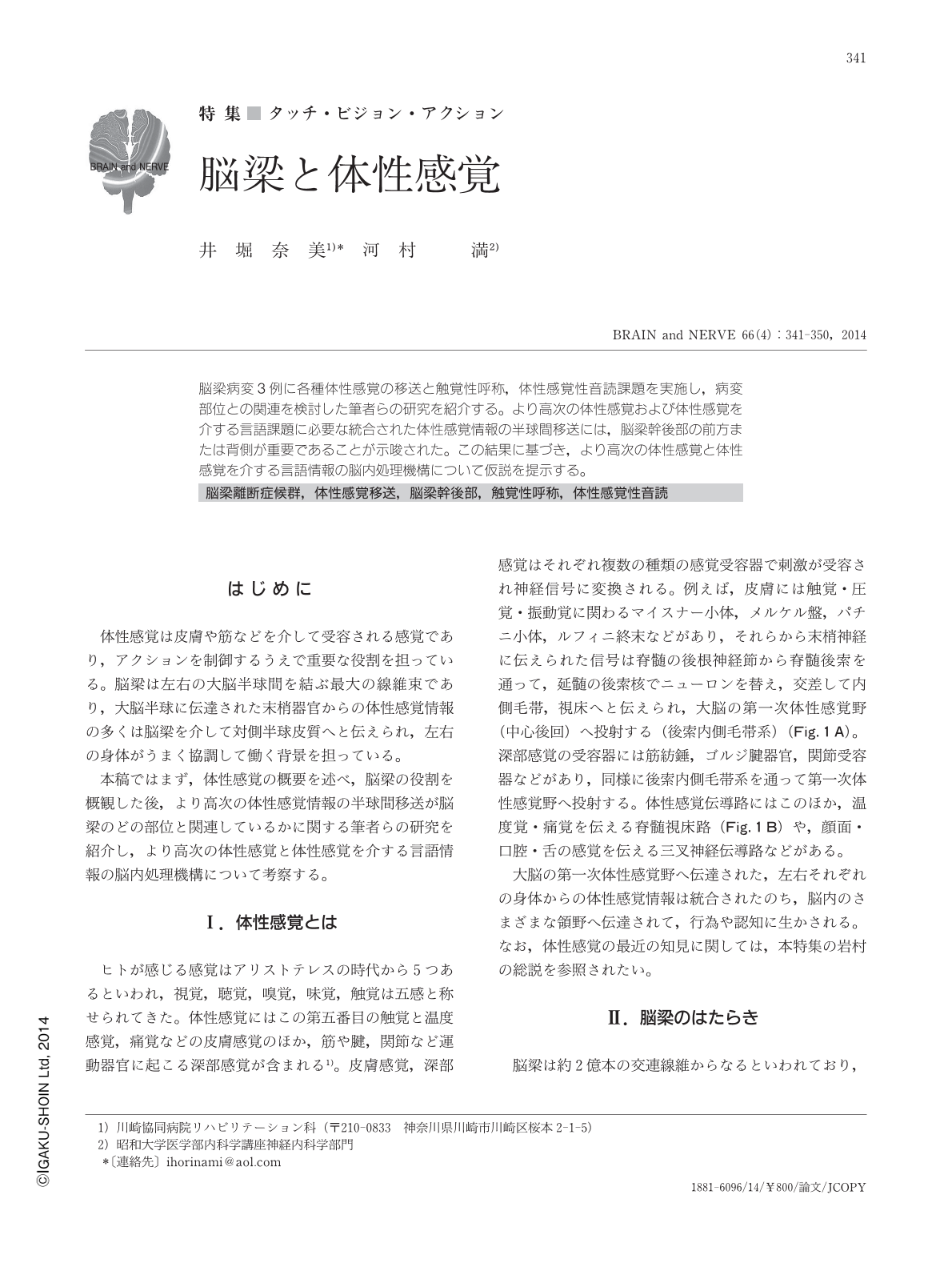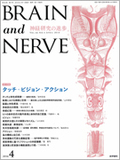Japanese
English
増大特集 タッチ・ビジョン・アクション
脳梁と体性感覚
Corpus Callosum and Somesthetic Transfer
井堀 奈美
1
,
河村 満
2
Nami Ihori
1
,
Mitsuru Kawamura
2
1川崎協同病院リハビリテーション科
2昭和大学医学部内科学講座神経内科学部門
1Department of Rehabilitation, Kawasaki Cooperative Hospital
2Department of Neurology, Showa University School of Medicine
キーワード:
脳梁離断症候群
,
体性感覚移送
,
脳梁幹後部
,
触覚性呼称
,
体性感覚性音読
,
callosal disconnection syndromes
,
somesthetic transfer
,
posterior truncus of corpus callosum
,
tactile naming
,
somesthetic reading
Keyword:
脳梁離断症候群
,
体性感覚移送
,
脳梁幹後部
,
触覚性呼称
,
体性感覚性音読
,
callosal disconnection syndromes
,
somesthetic transfer
,
posterior truncus of corpus callosum
,
tactile naming
,
somesthetic reading
pp.341-350
発行日 2014年4月1日
Published Date 2014/4/1
DOI https://doi.org/10.11477/mf.1416101757
- 有料閲覧
- Abstract 文献概要
- 1ページ目 Look Inside
- 参考文献 Reference
脳梁病変3例に各種体性感覚の移送と触覚性呼称,体性感覚性音読課題を実施し,病変部位との関連を検討した筆者らの研究を紹介する。より高次の体性感覚および体性感覚を介する言語課題に必要な統合された体性感覚情報の半球間移送には,脳梁幹後部の前方または背側が重要であることが示唆された。この結果に基づき,より高次の体性感覚と体性感覚を介する言語情報の脳内処理機構について仮説を提示する。
Abstract
Here we describe somesthetic disconnection in 3 patients with callosal lesions. The results suggest the importance of the anterior and/or dorsal part of the posterior truncus of the corpus callosum for interhemispheric transfer of discriminative sensations and integrated somesthetic information necessary to tactile naming and somesthetic reading. We provide a hypothesis for the neural mechanisms underlying somesthetic communication.

Copyright © 2014, Igaku-Shoin Ltd. All rights reserved.


